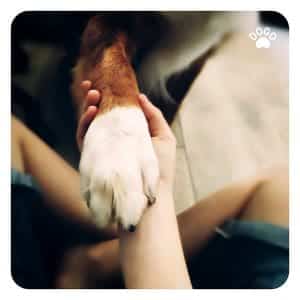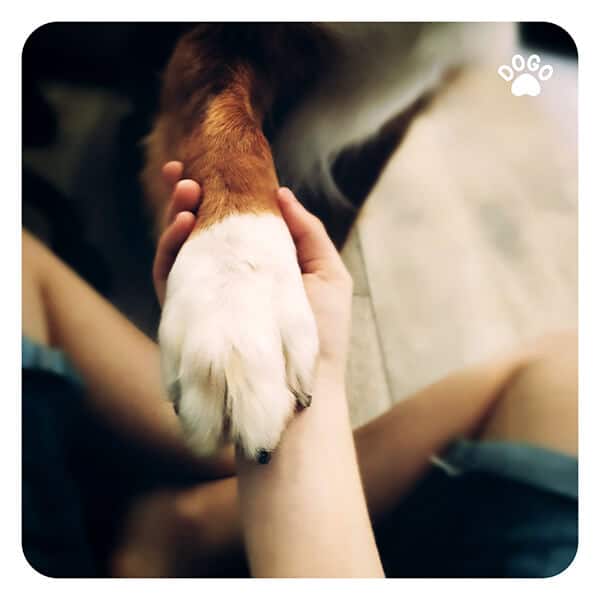 If you’re a dog owner, you’ve likely experienced the sensation of your furry friend gently pawing at you. Whether it’s during playtime, when they’re seeking your attention, or even when you’re sitting quietly, this behavior can leave you wondering about its meaning. In this blog post, we’ll explore the reasons behind why dogs paw at their humans. Understanding this behavior can deepen the bond between you and your canine companion.
If you’re a dog owner, you’ve likely experienced the sensation of your furry friend gently pawing at you. Whether it’s during playtime, when they’re seeking your attention, or even when you’re sitting quietly, this behavior can leave you wondering about its meaning. In this blog post, we’ll explore the reasons behind why dogs paw at their humans. Understanding this behavior can deepen the bond between you and your canine companion.
Understanding Canine Communication
Dogs have their own unique ways of communicating with us, often using body language and behaviors to convey their feelings and needs. One such behavior is pawing. It’s essential to recognize that when dogs interact with humans, they often do so through actions that are natural to their species. In the wild, dogs use their paws to communicate with other dogs, to dig for food, and to create comfortable resting spots. When they transfer these behaviors to their interactions with humans, it’s their way of trying to communicate something to us.
Seeking Attention and Affection
One of the most common reasons for a dog to paw at its owner is to seek attention or affection. Dogs are social animals and thrive on human interaction. When they paw at you, it may be their way of asking for a pat on the head, a belly rub, or some quality time together. It’s their attempt to initiate physical contact and engage with you. This behavior is often seen as a display of their desire for closeness and connection.
Expressing Stress or Anxiety
In some cases, pawing can be a sign of stress or anxiety in dogs. When a dog feels uneasy or uncomfortable, they may resort to behaviors like pawing to seek reassurance from their human. This can happen during unfamiliar situations, such as meeting new people or being in a new environment. Understanding your dog’s body language and the context in which they’re pawing can help you identify whether it’s a plea for comfort or a way of expressing distress.
Instinctual Behaviors
Pawing can also be an instinctual behavior that dogs exhibit. In the wild, canines use their paws to explore and interact with their environment. This natural instinct may carry over into domestic settings, where dogs use their paws to investigate objects, surfaces, or even people. It’s important to remember that this behavior is deeply ingrained in their nature and is not always driven by specific needs or emotions. Sometimes, it’s simply a reflection of their innate instincts.
Medical Reasons
While pawing is often a benign behavior, it’s crucial to be attentive to any changes in your dog’s pawing habits. Persistent or sudden increases in pawing could be a sign of an underlying medical issue, such as discomfort, pain, or irritation. If you notice a significant change in your dog’s behavior, it’s advisable to consult a veterinarian to rule out any health concerns that may be causing the increased pawing.
Strengthening the Bond
Understanding why dogs paw at their owners can help foster a stronger bond between you and your canine companion. By recognizing the various motivations behind this behavior, you can respond appropriately to your dog’s needs and strengthen your communication with them. Whether it’s offering reassurance during stressful moments, providing affection, or simply acknowledging their natural instincts, responding thoughtfully can deepen the connection you share with your beloved pet.
In conclusion, dogs paw at their owners for a variety of reasons, ranging from seeking attention and affection to expressing stress or anxiety. By observing their body language and considering the context, you can better understand what your dog is trying to communicate. Remember that every dog is unique, and their reasons for pawing may vary. By being attuned to their needs, you can build a stronger and more fulfilling relationship with your loyal four-legged friend.
[/fusion_text]

